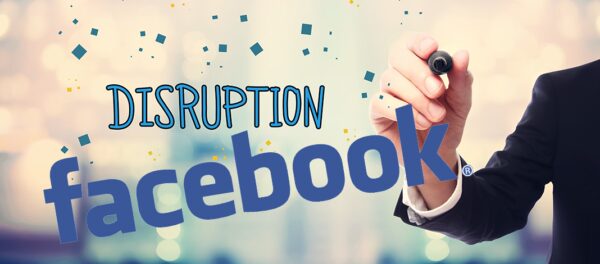The Facebook Newsfeed Change – What Does It Mean?

If you haven’t already heard, Facebook recently made a major change in the way information gets shared in one’s personal newsfeed. The change has a wide-ranging impact on how brands and brand marketers will realize value from paid strategies, particularly with regards to advertising and re-marketing. If you or your company advertises on Facebook, you want to be aware of this development, as a status quo strategy in light of the changes could result in wasted budget.
At the heart of the change in a tweak in the proprietary algorithm that Facebook uses to determine what information gets passed into the newsfeed, and what doesn’t. In the past, brand marketers had the ability to target specific demographics using Facebook’s extensive advertising tools, and that is still the case. However, it does mean that budget spend alone isn’t the influencing factor it once was in terms of how your ad or boosted post gets served or seen.
In a December, 2018 blog post, Mark Zuckerberg hinted at the changes to come in the new year:
“One of our big focus areas for 2018 is making sure the time we all spend on Facebook is time well spent. We built Facebook to help people stay connected and bring us closer together with the people that matter to us. That’s why we’ve always put friends and family at the core of the experience. Research shows that strengthening our relationships improves our well-being and happiness. But recently we’ve gotten feedback from our community that public content — posts from businesses, brands and media — is crowding out the personal moments that lead us to connect more with each other.”
In the post, Zuckerberg goes on to say: “The first changes you’ll see will be in News Feed, where you can expect to see more from your friends, family and groups. As we roll this out, you’ll see less public content like posts from businesses, brands, and media. And the public content you see more will be held to the same standard — it should encourage meaningful interactions between people.”
This last paragraph is the one that jolted many brand marketers into the reality of the new normal: that targeted advertisements and boosted posts would appear with less frequency (or not at all) in the Newsfeed, and that a litmus test of what will appear will be based on engagement.
Here are some of the things you can expect to see as the changes take effect:
Less Video in the Newsfeed
Facebook’s goal with the newsfeed is to create engagement and interaction among one’s network, and video works against that, since it’s largely a passive activity. For that reason, fewer videos will be passed into the newsfeed, and the ones that get engagement and foster interactivity and dialogue will get preference. So, if you were running 30-second advertising-type posts (via paid strategies) which garnered light engagement, you might want to re-think this approach.
Posts that spark and inspire conversations and meaningful interactions among people will be prioritized over public content in the news feed after this update (this aligns with Facebook’s existing news feed values).
Live Video Moves to the Forefront
While less static video will be served, live video (a feature Facebook has continually put more focus on), will move up in the newsfeed foodchain. This is because live video typically is a significant driver of interaction and engagement – Facebook’s research shows that live video receives up to 6x engagement over other post types. Particularly if your brand has moved to a more professional live video format such as that offered by virtual switching software providers like Telestream’s Wirecast, you’re well positioned to move ahead of the laggards who are not ready to adapt to the changes.
Groups Will Rise to the Top
By nature, group forums are built around engagement and dialogue – two components that are high on Facebook’s list of “Likes.” With this in mind, savvy marketers will look to creating groups around relevant topics to address this opportunity, but the ones that thrive will be the groups that focus on building community as opposed to pushing out pure marketing and sales jibberish. It’s really easy to build a group on Facebook (click here to learn how). Obviously, the “if you build it they will come” fallacy applies here, so make sure your group has relevance or value. Otherwise you’re just adding to the list of content that’s falling to the bottom of the priority list in terms of what Facebook wants.
Content With Extended Comments
With regards to Facebook’s increased focus on engagement, greater emphasis will be placed on posts that have extended engagement, such as replies and comments on other’s comments. This goes beyond the simple click of “Liking” a post or comment – Facebook will put a high value on those posts with lots of engagement or robust dialogue. Again, this reflects Facebook’s goal to move from a less passive forum (such as watching video) to a more engaged forum where real interactions take place.
One Final Note About Change – A Drop in Organic Reach
Facebook has also made a change in the way it reports Organic Reach, which is how non-paid content is counted in terms of placement in the Newsfeed. Facebook estimates that the new approach to reporting Organic Reach will result in somewhere in the realm of a 20% drop in reports of organic reach. But this number is misleading!
This does not mean your organic reach numbers will drop by 20%. It simply means that Facebook is changing the way it counts what organic reach is. The change to the organic reach statistic puts this stat on par with how Facebook already reports paid reach.
This is how Facebook outlined what the change means: “Reach counts will now be based on viewable impressions. On Pages, we’ve historically defined reach as a person refreshing their News Feed and the post being placed in their feed. For paid ads reports, we’ve moved to a stricter definition that only counts reach once the post enters the person’s screen (“viewable impressions”).”
In other words, if your post is working, it won’t be any less (or more) effective based on the numbers. It’s simply being accounted for in a different way that is consistent across the board with how Facebook measures a post’s effectiveness.
What Next?
The changes to the newsfeed algorithm are significant, and if you practice “business as usual,” you’ll see diminishing returns on your Facebook efforts. That said, it’s not the end of the world for marketers on Facebook. It just reinforces what I’ve said for quite some time now … that Content is King, and a Content Distribution Ecosystem is a strong way to outmaneuver your competitors. If your content (whether organic or paid) is engaging, thought-provoking, value-based, etc., then you will see people interacting with it. And that’s a win-win for everyone.

Bill Threlkeld is president of Threlkeld Communications, a content digital marketing and public relations advisory based in Santa Monica, California. Threlkeld Communications specializes in content ecosystem campaigns, also known as the Content Distribution Ecosystem, a unique content approach that synchronizes and integrates PR, Social Media, Blogs, Audio, Video, Email Marketing and other content marketing components for systematic distribution and measurable results.
